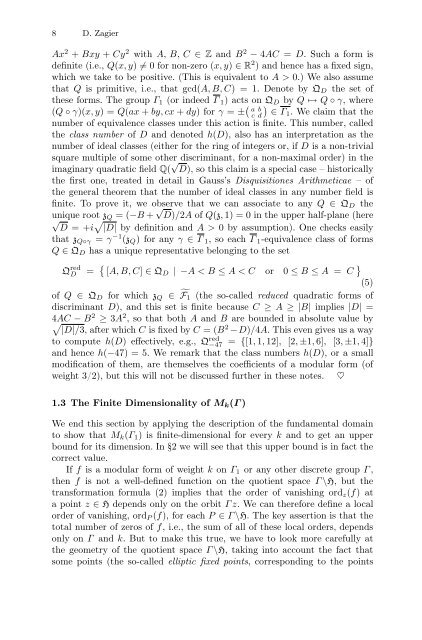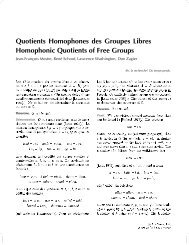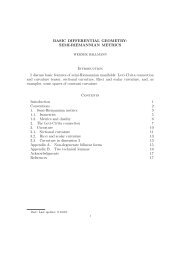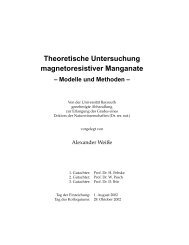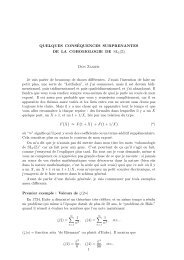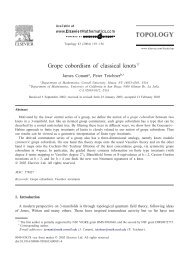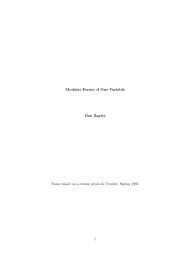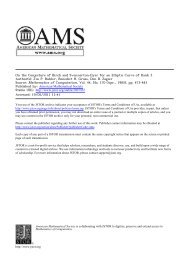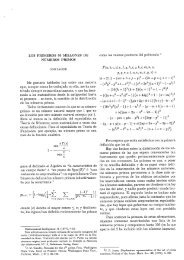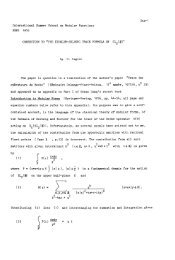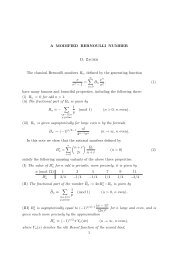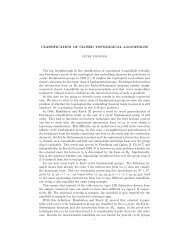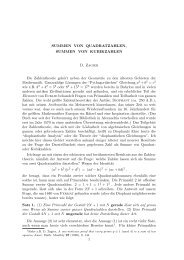Elliptic Modular Forms and Their Applications - Up To
Elliptic Modular Forms and Their Applications - Up To
Elliptic Modular Forms and Their Applications - Up To
Create successful ePaper yourself
Turn your PDF publications into a flip-book with our unique Google optimized e-Paper software.
8 D. ZagierAx 2 + Bxy + Cy 2 with A, B, C ∈ Z <strong>and</strong> B 2 − 4AC = D. Such a form isdefinite (i.e., Q(x, y) ≠0for non-zero (x, y) ∈ R 2 ) <strong>and</strong> hence has a fixed sign,which we take to be positive. (This is equivalent to A>0.) We also assumethat Q is primitive, i.e., that gcd(A, B, C) = 1.DenotebyQ D the set ofthese forms. The group Γ 1 (or indeed Γ 1 )actsonQ D by Q ↦→ Q ◦ γ, where(Q ◦ γ)(x, y) =Q(ax + by, cx + dy) for γ = ± ( abcd)∈ Γ1 . We claim that thenumber of equivalence classes under this action is finite. This number, calledthe class number of D <strong>and</strong> denoted h(D), also has an interpretation as thenumber of ideal classes (either for the ring of integers or, if D is a non-trivialsquare multiple of some other discriminant, for a non-maximal order) in theimaginary quadratic field Q( √ D), so this claim is a special case – historicallythe first one, treated in detail in Gauss’s Disquisitiones Arithmeticae –ofthe general theorem that the number of ideal classes in any number field isfinite. <strong>To</strong> prove it, we observe that we can associate to any Q ∈ Q D theunique root z Q =(−B + √ √ √D)/2A of Q(z, 1) = 0 in the upper half-plane (hereD =+i |D| by definition <strong>and</strong> A>0 by assumption). One checks easilythat z Q◦γ = γ −1 (z Q ) for any γ ∈ Γ 1 ,soeachΓ 1 -equivalence class of formsQ ∈ Q D has a unique representative belonging to the setQ redD = { [A, B, C] ∈ Q D |−A


